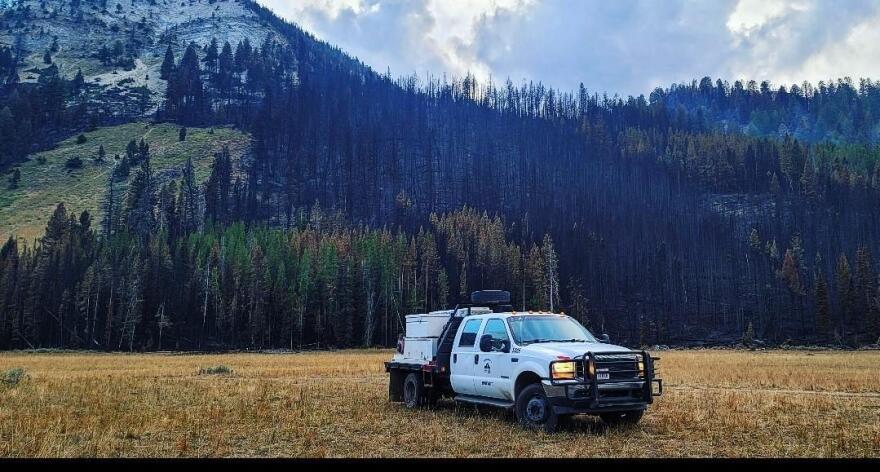After wildfire has consumed an area, forest officials often send a Burned Area Emergency Response (BAER) Team to evaluate damage and other risks.
“I always tell people it's kind of like we're detectives trying to determine what the crime is going to be,” said Shawn Robnett, forest engineer and BAER team lead on the Ross Fork fire in the Sawtooth National Forest.
The team works to find risks to what they call ‘values at risk.’ Those risks can be to humans, where dead trees might fall over a camping area, or property like roads.
“A mudslide coming down a hill slope and burying a road, or plugging a culvert and then after the debris comes down, here comes the flow and washes our road away,” Robnett explains.
“And then that road dumps into the streams. And then you've got all this sediment that goes down in the stream habitat. So it's kind of a domino effect.”
Other values at-risk teams evaluate are natural resources or at-risk species and their habitats.
BAER Team specialists work to mitigate future damage; deciding which areas should stay closed, and predicting where the areas most at risk from mudslides and flash floods are two common examples.
The size and scope of the team depend on the features within the burned area; teams might be as few as three specialists. Robnett’s current team is nine.
What they’ve found so far is that the Ross Fork Fire blew up so quickly, much of the ground didn’t bake, protecting many areas from the worst risks of erosion.
“You take these little tiny sub little watersheds or these little drainages, and if you look at those, there are some places where it was pretty hot, and did cook the ground a little bit.”
He calls that pretty typical and said the Ross Fork burned area hasn’t produced any big surprises. More than 300 personnel continue to monitor that fire, but it has not grown significantly since early September. The lightning-caused fire is 44 percent contained. Alturas Lake remains closed to public access.
When the team identifies areas at risk, it will propose ‘treatment’ and ask the federal government for funding. But there are limits to the scope of their work - you can’t spend $1 million to protect a $20,000 outhouse, for example.
“It's an emergency stabilization process that we're doing,” Robnett said. “We're not building new, we're not able to fix things that were already not fixed before the fire.”
And they have to work quickly. Funding for treatment is only available for one year after a fire, and teams are up against Mother Nature’s clock, too.
“It's kind of hard to get all this stuff done before the snow flies. It's all about triage, right? So we're trying to get the worst places done first and then pick it up in the spring,” he said.
Because once thunderstorm season arrives in July, risks of isolated, heavy rainfall triggering a problem in a burn scar increases.
“You can't stop Mother Nature,” Robnett said. “This is a fact of how the system works. But, this is the part you’ve got to be successful with what you're proposing: Can we be successful in preventing it from getting any worse than where it's at now in this condition?”



